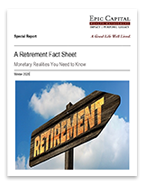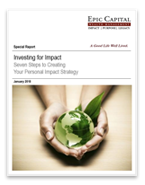Stocks Gain Tremendously Since 2009
Jan 24, 2020

Where were you on March 9, 2009? Do you remember the headwinds hitting Wall Street stocks then? When the closing bell rang at the New York Stock Exchange that Monday afternoon, it marked the end of another down day for stocks. Just hours earlier, the Wall Street Journal had asked: “How Low Can Stocks Go?”1
The Standard & Poor’s 500 stock index answered that question by sinking to 676.53, even with mergers and acquisitions making headlines. The index was under 700 for the first time since 1996. The Dow Jones Industrial Average tumbled to a closing low of 6,547.05.2
To quote Dickens, “It was the best of times, it was the worst of times.” It was the bottom of the bear market – and it was also the best time, in a generation, to buy stocks.2
The next day, a rally began.
Buoyed by news of one major bank announcing a return to profitability and another stating it would refrain from further government bailouts, the Dow rose 597 points for the week ending on March 16, 2009. On March 26, the Dow settled at 7,924.56, more than 20% above its March 9 settlement. The bull market was back.3
This bull market might well continue.
Should the bull market keep rolling along, it may reach yet another milestone in a matter of weeks.
March could mark the bull market’s eleventh year. Making it that far would add to its record length, but it is by no means guaranteed. There is a history of a weaker market during January of an election year. This could lead to a correction, which is a decline of at least 10% from a recent high. Perhaps, but a correction is not necessarily the end of the bull market. In fact, such a correction would not be the first for this specific bull market.4,5
The gains of the current bull market did not come without turbulence, and stocks in no way turned into a “sure thing.” The risk inherent in the market is still substantial along with the potential for loss. The lesson this long bull market has taught is simply that the bad times in the stock market may be worth enduring. Good times may replace those bad times more swiftly than anyone can anticipate.
Tags: financial advisor, Investment Planning, Investment Portfolio, Investments, retirement
More Insights
Few terms in personal finance are as important, or used as frequently, as “risk.” Nevertheless, few terms are as imprecisely defined. Generally, when financial advisors or the media talk about investment risk, their focus is on the historical price volatility of the asset or investment under discussion.
As Americans get their grills and beach chairs ready for the July 4th holiday, the stock market and the weather across much of the country have both been on heaters. Stocks and bonds continue to effectively navigate a complex policy landscape shaped by evolving trade dynamics, geopolitical tensions, and fiscal stimulus. The market’s resilience in … Continue reading “Market Update – America Gets Record High Stock Prices for Its Birthday”
Birthdays may seem less important as you grow older. They may not offer the impact of watershed moments such as getting a driver’s license at 16 and voting at 18. But beginning at age 50, there are several key birthdays that can affect your tax situation, health-care eligibility, and retirement benefits.
During times like these when geopolitical headlines can be unsettling for investors, we at LPL Research like to remind ourselves of one of our key investing principles. Markets have always faced challenges —ranging from geopolitical conflicts and economic downturns to natural disasters, political upheaval and health crises. These events often trigger short-term volatility and shake … Continue reading “Why Long Term Investing Beats Selling in Volatile Times”
Are you concerned about the inheritance taxes your heirs may have to pay? Then you may want to consider creating charitable lead trusts.
Services
Epic Capital provides the following comprehensive financial planning and investment management services: Learn More >


 Top of Page
Top of Page











